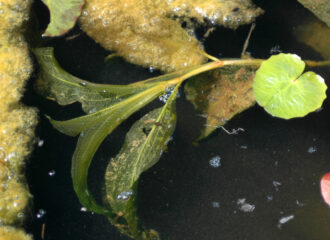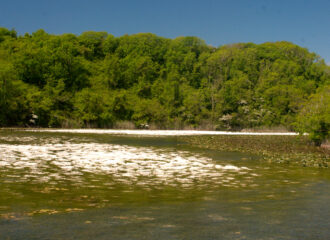Lakes, which have a larger surface e area and are deeper than pools and ponds, are well distributed in Wales and are classified for the purposes of nature conservation according to the trophic status of the water, i.e. whether it is oligotrophic, mesotrophic or eutrophic. Some key characters of these lakes are outlined in the sections below.
Lakes

Eutrophic lakes
Natural eutrophic lakes have higher nutrient levels than oligotrophic, dystrophic and mesotrophic lakes, giving rise to a higher productivity than these more acidic lakes. The largest natural eutrophic lake in Wales is Llangorse Lake in Breconshire, which overlies Old Red Sandstone. The aquatic flora tends to be dominated by water lilies (Nuphar spp.) and pondweeds…

Hard oligo-mesotrophic lakes
Hard oligo-mesoptrophic lakes are characterised by water with a high base content, most often calcium, but very rarely magnesium, and are usually confined to areas of limestone and other base-rich substrates. These standing waters typically have very clear water and low nutrient status. They are therefore largely restricted to situations where the catchment or aquifer…

Oligotrophic lakes
Most of the upland lakes in Wales would be in the oligotrophic category, with a small number supporting native populations of Arctic charr (Salvelinus alpinus) and a distinctive flora typically comprising species including water lobelia (Lobelia dortmanna), quillwort (Isoetes lacustris) and shoreweed (Litorella uniflora) and occasionally the rarer awlwort (Subularia aquatica). The water in these…

